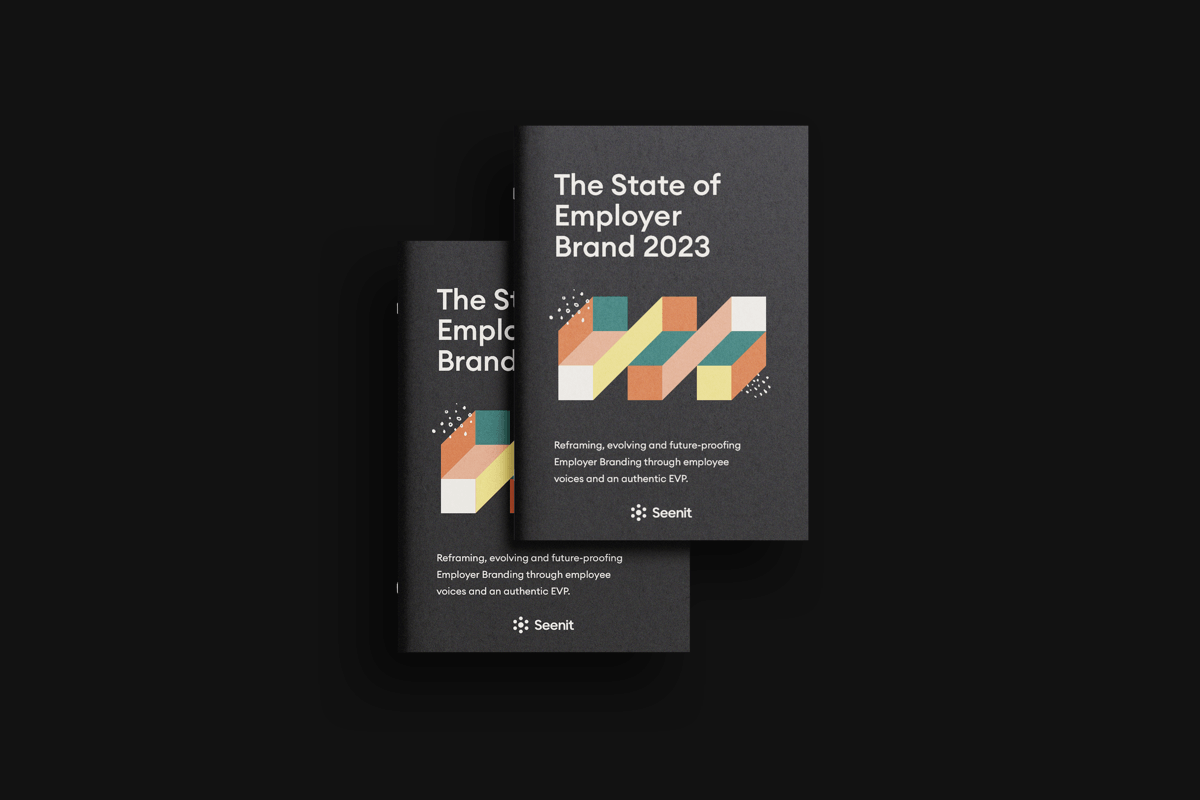Introduction
Welcome to The State of Employer Brand
These past few years have proven turbulent for Employer Branding. On the one hand, market instability has rocked the industry, leading to redundancies and hiring freezes. On the other, employees have refined their standards and are making conscious choices when picking a role and company to work for.
The spotlight has been shining on the Employer Branding function as companies face attraction, engagement, and retention challenges.
In this report, we’ll look into how to reframe, evolve, and future-proof Employer Branding through employee voices and an authentic EVP. Each section delves into the challenges, innovations, and strategies that Employer Branding professionals must grasp in this ever-changing environment.
We combined our experience from two previous State of Employer Brand reports with advice from industry experts to bring you a holistic look at The State of Employer Brand. We’re supporting our findings with two surveys, gathering knowledge from hundreds of Employer Branding professionals and employees alike.
If you’re looking to leave the turbulence in Employer Brand behind you or for tips to take your role to the next level, keep reading.
Emily Forbes, CEO and Founder, Seenit
1. Reframing Employer Branding
The Evolution of Employer Branding
Employer Branding is one of the fastest-evolving business functions. Not only is it intrinsically linked to market needs, but it’s at the mercy of employees’ ever-changing priorities, expectations, and concerns.
We’ve previously released two State of Employer Brand reports, in 2021 and 2022. So, when discussing the evolution of Employer Branding, it’s only fitting to start by comparing our findings.
We focused on the evolution of the main pillars of Employer Branding: attracting, engaging, and retaining.
Attracting
Employer Brand is popping up on employee radars, with 76% researching a company’s Employer Branding in 2023, a 52% increase compared to 2022.
With that, 96% of employees stated they would be more likely to apply to a company with a good employer brand, a 39% increase from previous years.
Though the number of employees who check review sites before an application hasn’t changed, 87% now say negative reviews would deter them from applying. It seems employees are standing up for themselves, with only 58% previously expressing that same opinion.
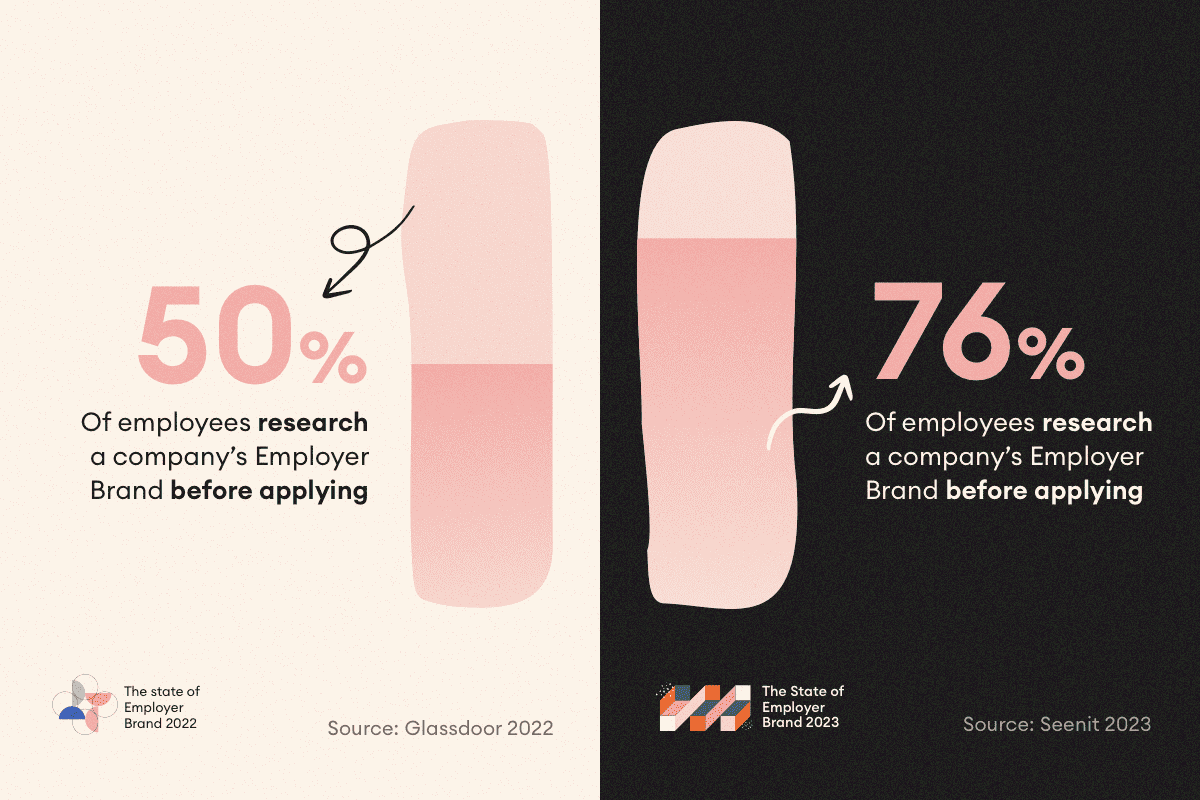
Engaging
After COVID-19, 68% of employees were disengaged in both their role and business. Today, 86% of employees reported feeling more engaged. An encouraging statistic trending upwards in the age of quiet quitting and the talent revolution.
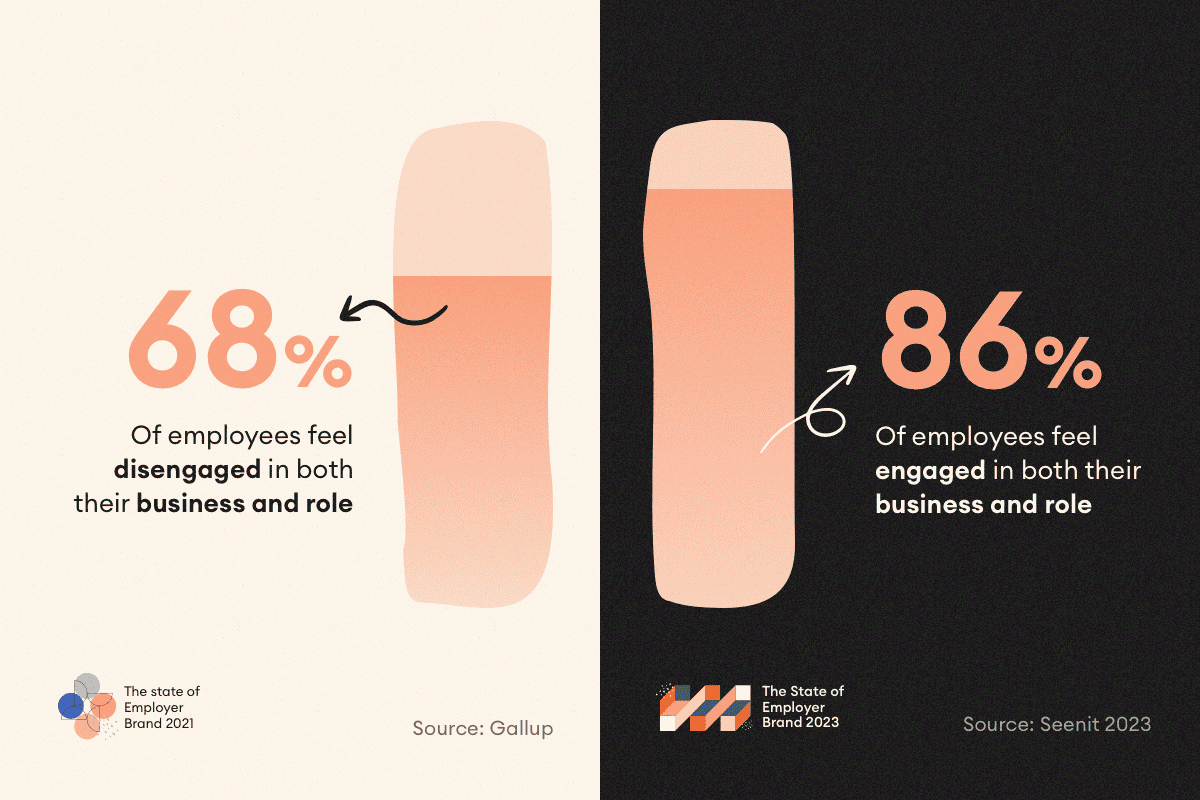
Retaining
Back in 2021, 84% of employees considered leaving their current jobs for another company with a better reputation. This underpinned the importance of Employer Branding as well as company culture. Today, most employees report they’d think about leaving for the same reason.
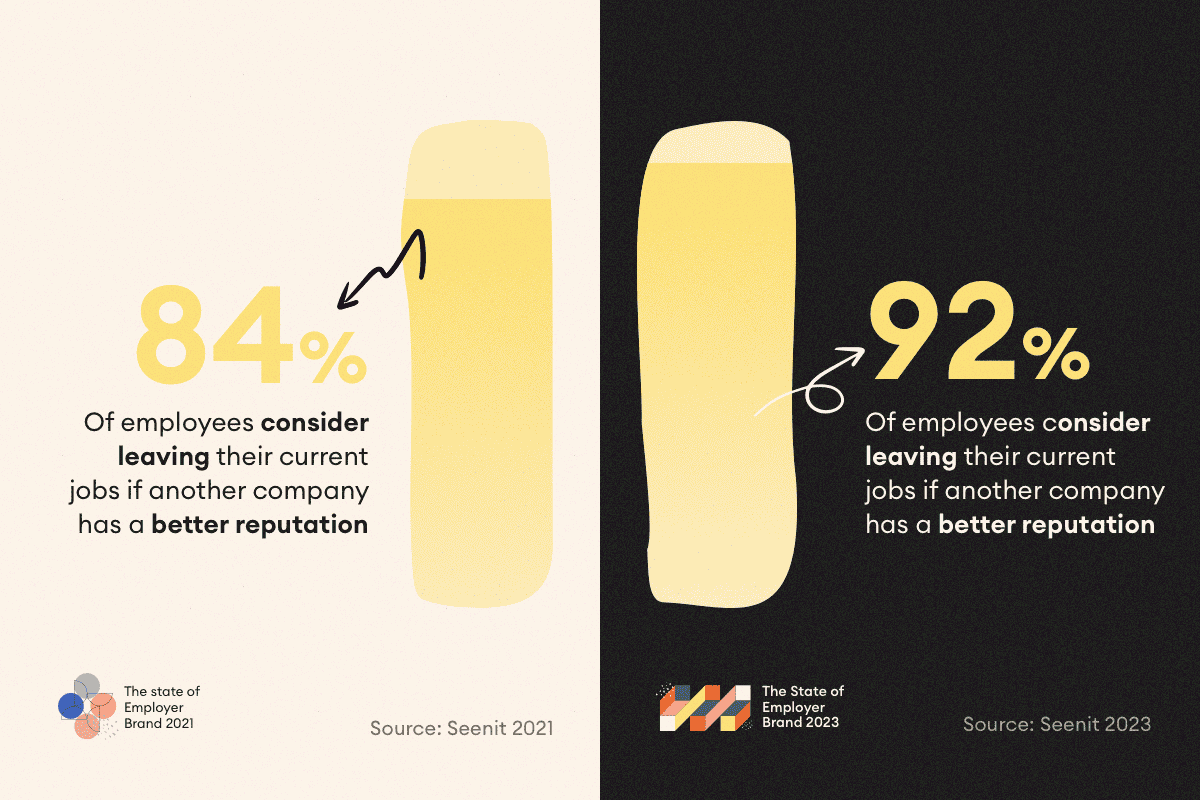
One thing is for sure: Employer Branding professionals are being pulled in all directions and forced to constantly adapt. With prioritisation becoming a vital skill for professionals, let’s look at some key aspects of your Employer Brand that should be on your 2023 roadmap.
“You will be in a hamster wheel constantly. Maintain a long-term vision while pivoting daily. You can implement small daily changes that drive bigger impact over the longer term.”
Shona Wilson, Global Employer Brand Director, Veeam Software
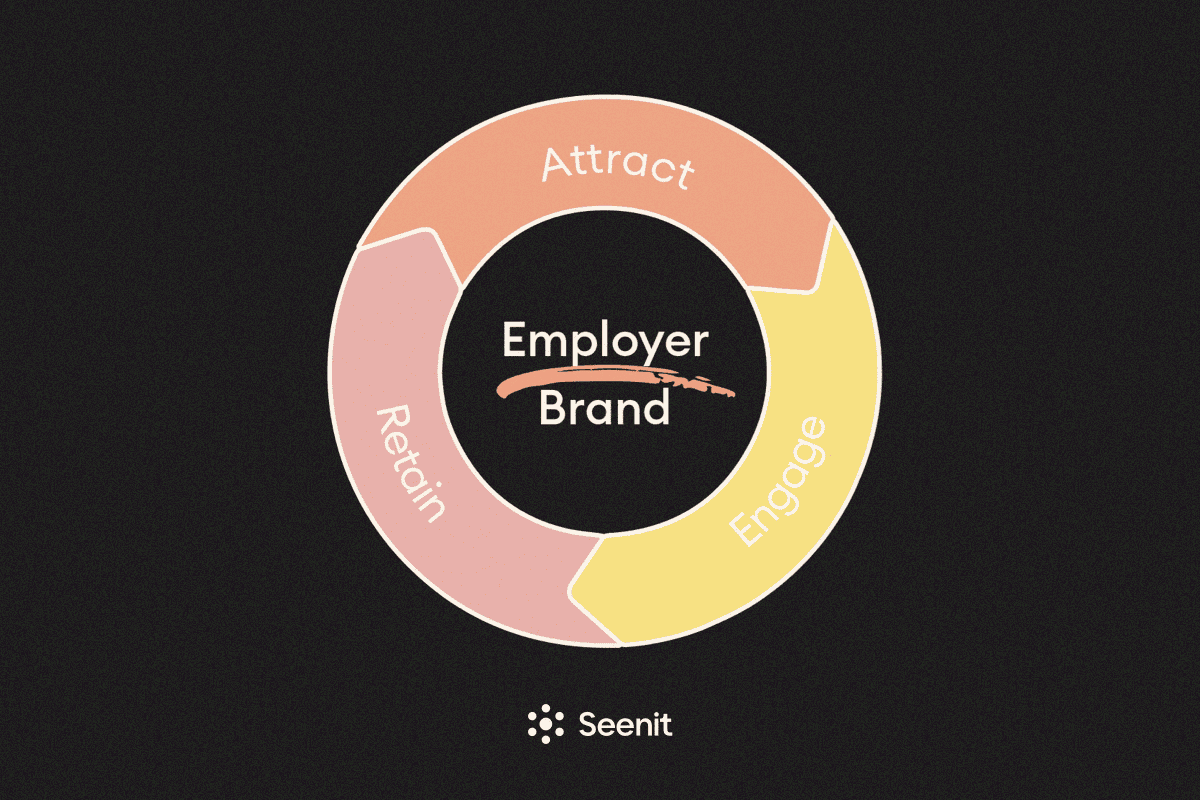
Navigating shifting landscapes
If The State of Employer Brand keeps you up at night (you’re not alone) then you’ll surely have noticed the shift caused by the ever-changing market landscape. From COVID-19 to a global recession, the corporate world, and general population, hasn’t had it easy.
So, how exactly has it changed?
Companies went from recruiting like crazy to hiring freezes. And, as is often the case, going from one extreme to another can have drastic repercussions. One way to protect the function in trickier times, is to reframe the focus. It’s not just about attracting, retaining, or engaging. It’s about identifying a need.
“There’s always going to be hiring that will be needed. The question is going to be: where?”
Shana Andrews, Senior Marketing & Employer Branding Consultant
40% of Employer Brand professionals report struggling with a talent shortage, with 30% identifying top talent as the main concern. From a talent perspective, Employer Brand can no longer focus only on hiring talent. It’s about hiring the right talent at the right time.
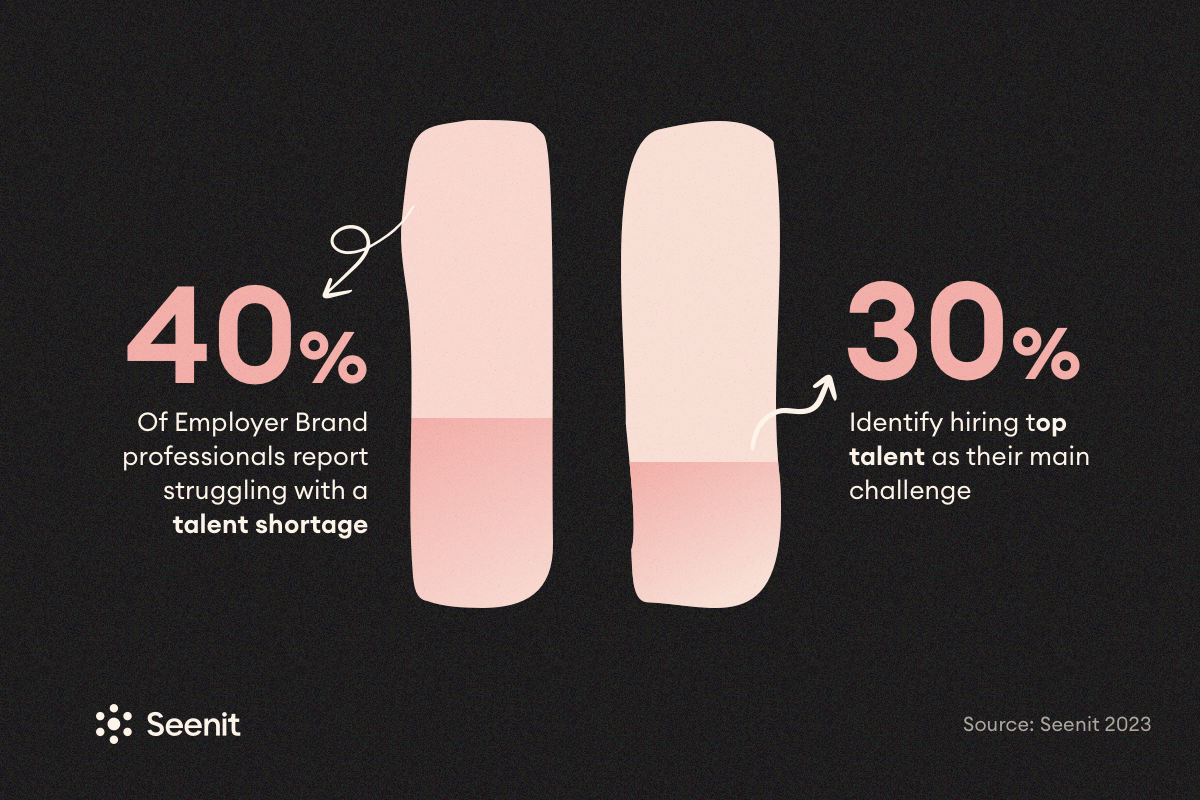
But, if Employer Brand is so dependent on what is happening in the market, how can the function face upcoming challenges?
“You may feel the world is speeding up now, but it will never be as slow as it is now. Adapt fast, that’s the key”
Adam Horvath, Chief Sparkle Offizzer, Brandfizz Employer Branding
It’s become clear that flexibility will be a keyword for all employee and candidate-focused teams.
“It feels like years ago it was kind of one-size fits-all. I think COVID changed the game a lot”.
Shana Andrews, Senior Marketing & Employer Branding Consultant
Here we are, noticing this evolution where one size no longer fits all, and Employer Branding professionals have to be smarter and more strategic in communicating with different audiences.
But to truly reframe Employer Branding, we must also reframe the audience.
Building a people-centric approach
Whether you want to call it employee, talent, or candidate-centric, the bottom line is: you need to put who you’re speaking to at the heart of your Employer Brand.
“Focus on what you’re offering individuals. Focus on them. Are you putting them as a priority? You want to take what they’re wanting into consideration and make that part of the overall experience that they get with your company.”
Alex Her, Head of Global Employer Brand, GoDaddy
These past few years, Employee Engagement has been a key focus. But as we’re nearing the end of 2023, we’ve noticed a rising interest in Employee Experience, with 55% of professionals identifying it as a trend and 77% of job seekers saying it is a deciding factor in their job search.
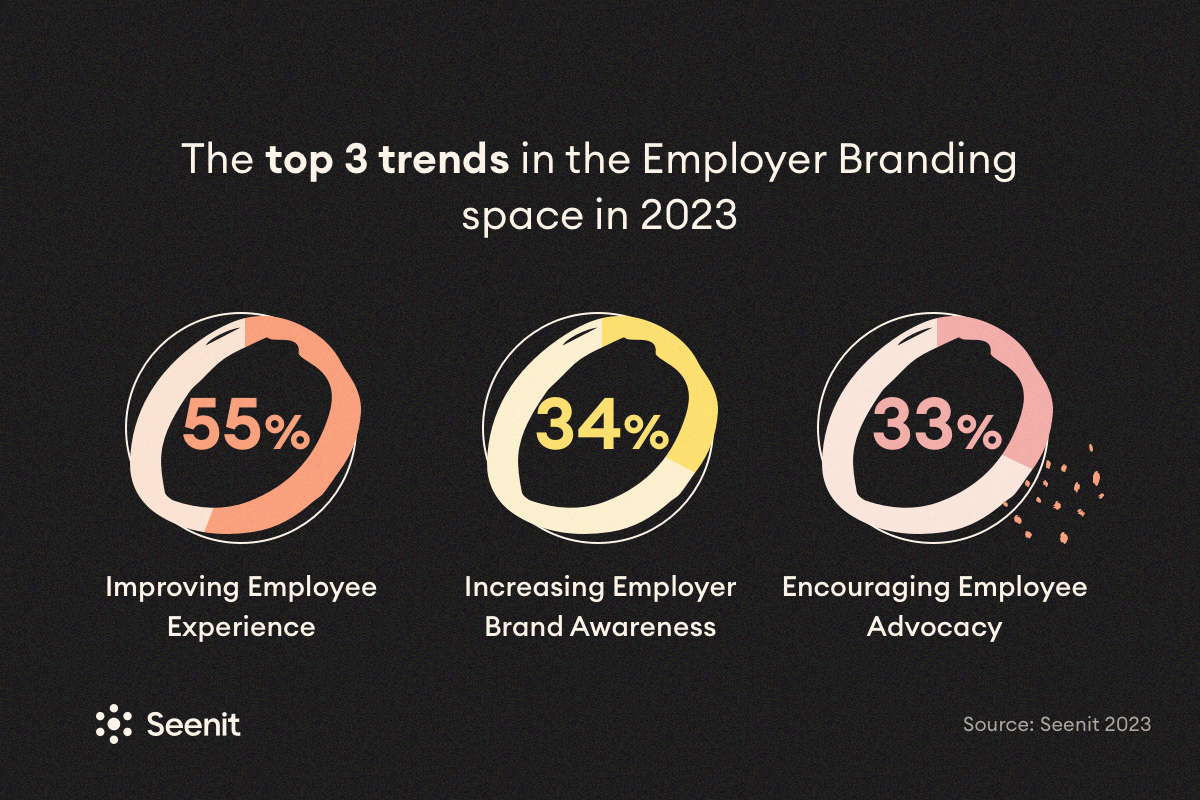
What’s the difference? Employee Experience (EX) involves every interaction a worker has with your organisation throughout their workplace journey. Employee Engagement (EE) is about how they feel as a result.
Simply put, EX is the input, and EE is the output. And as we reframe Employer Branding, we’d suggest a mix of both. You can’t have a hand in how your people feel without making every touchpoint about them, from onboarding to their last day at the company.
So where should you start?
Establishing Employer Brand awareness
One of the first steps of a people-centric approach involves getting your brand in front of their eyes. That means honing in on Employer Brand awareness.
On a recent webinar with Primark, Marcus McNeilly chatted about the challenge of a strong brand, but lack of a distinct Employer Brand.
“That general lack of awareness, that’s our big challenge. It’s a big brand, but people think of us as the store.”
Marcus McNeilly, Global Employer Brand and Attraction Lead, Primark
Webinar: Why User-Generated Video is a critical part of Primark’s Employer Brand strategy
Before we touch on the distinction, let’s remember that both are intrinsically linked.
“Your company brand is your Employer Brand. They’re the same.”
Mary Streetzel, Head of Global Employer Brand, Google
Webinar: Employer Brand 101 with Google - How to turn your employees into your Storytellers
Yes, Employer Brand will reflect the overall brand message, vision and mission. However, how an employee or potential hire thinks about both will be entirely different. Even for a company as large and well-known as Google, the challenges are similar.
“You might know us, but do you know everything that we want to let you know?”
Mary Streetzel, Head of Global Employer Brand, Google
With Employer Branding professionals identifying Employer Brand awareness as one of the top 3 trends for 2023, you might consider adding it to your never-ending list of priorities. Don’t worry, we’ll cover how to impact it in the following section.
But for now, consider video to get your message across. After all, 42% of employees seek video content to get a feel for company culture, leadership and everyday life. With a 60% increase from 2021, video is soon becoming an employee favourite way of connecting with brands.
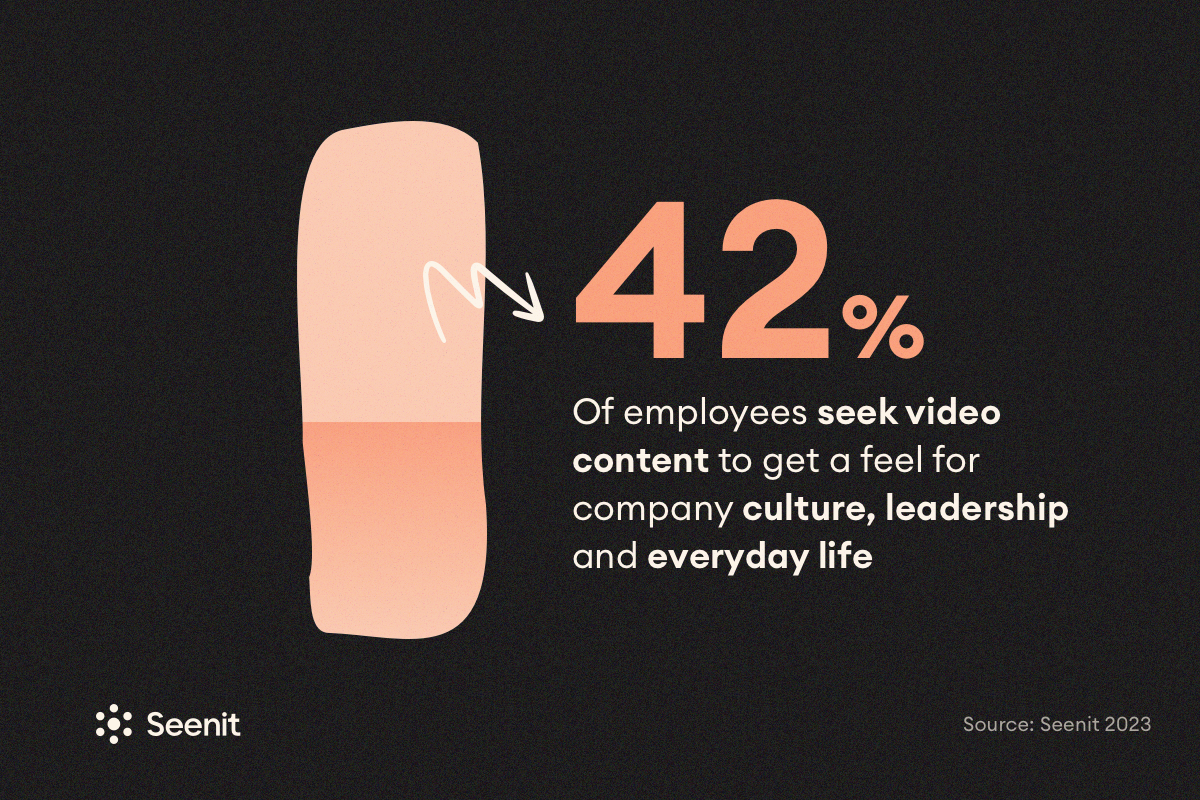
And what says “this is who we are” more than a behind-the-curtain look at a day in the life of your employees.
2. Elevating Employer Brand
Educating to get leadership buy-in
Don’t keep your secrets to yourself.
It’s all fun and games to build your Employer Brand action plan; you already know why the function should not be overlooked by a business. But what happens when you don’t have the support you’re hoping for?
“I think people are still struggling. No one really understands what we do.”
Alex Her, Head of Global Employer Brand, GoDaddy
What goes on behind the scenes doesn’t get much attention. We know getting caught up in the day-to-day tasks is easy, especially with little to no resources. This is true for companies across the board, with 62% of Employer Brand professionals reporting no increase in their budget this year, and 15% noting a decreased budget.
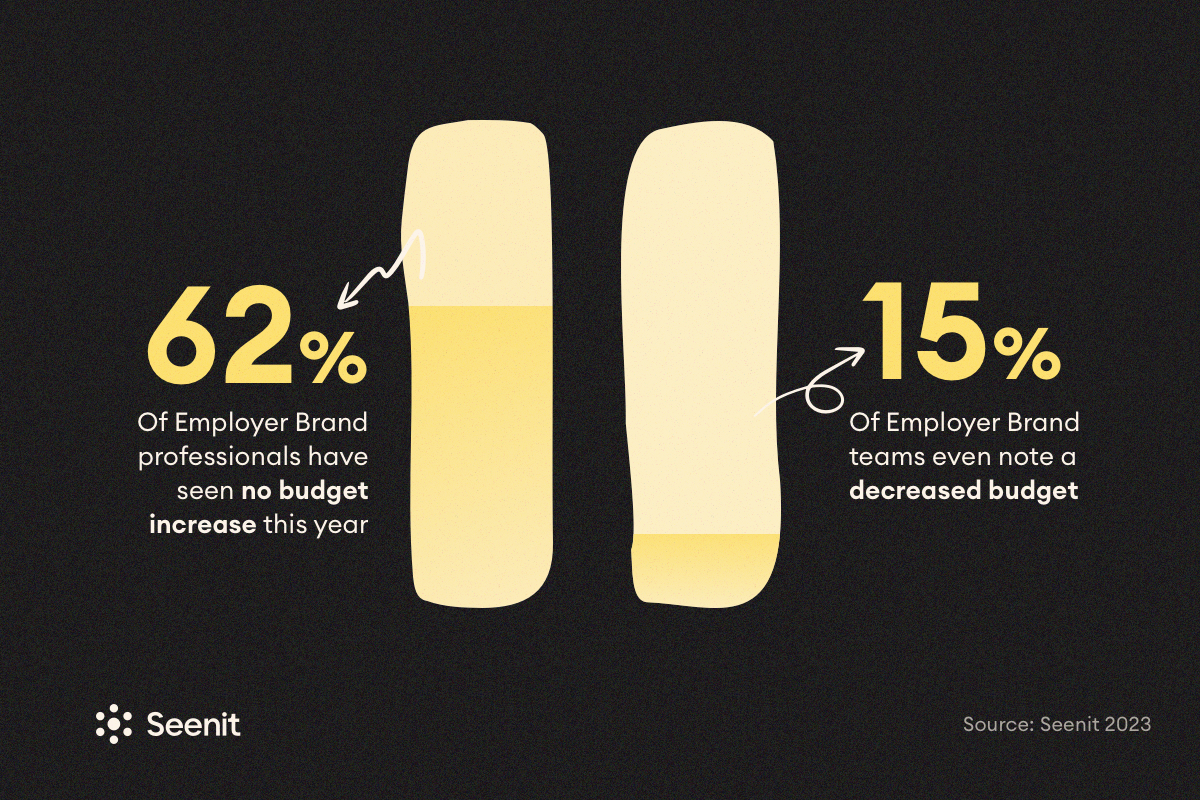
But resources are exactly why you should take the time to educate your leadership team, board members and other key stakeholders.
To take it one step further, Employer Brand teams have spent a significant amount of time educating around the “why” of Employer Branding. This year, another question has come into play: “how?”
“Why does a strong Employer Brand bring us business value? The question was, why should I pay attention? Now the question is how. How do you calculate your budget? How do you fit in with HR and marketing? It’s more tangigle, more action-oriented.”
Adam Horvath, Chief Sparkle Offizzer, Brandfizz Employer Branding
Unfortunately, only 15% of Employer Brand professionals say their organisation is dedicated to building and maintaining an attractive Employer Brand. So, here are a few thoughts for those still fighting to answer the why.
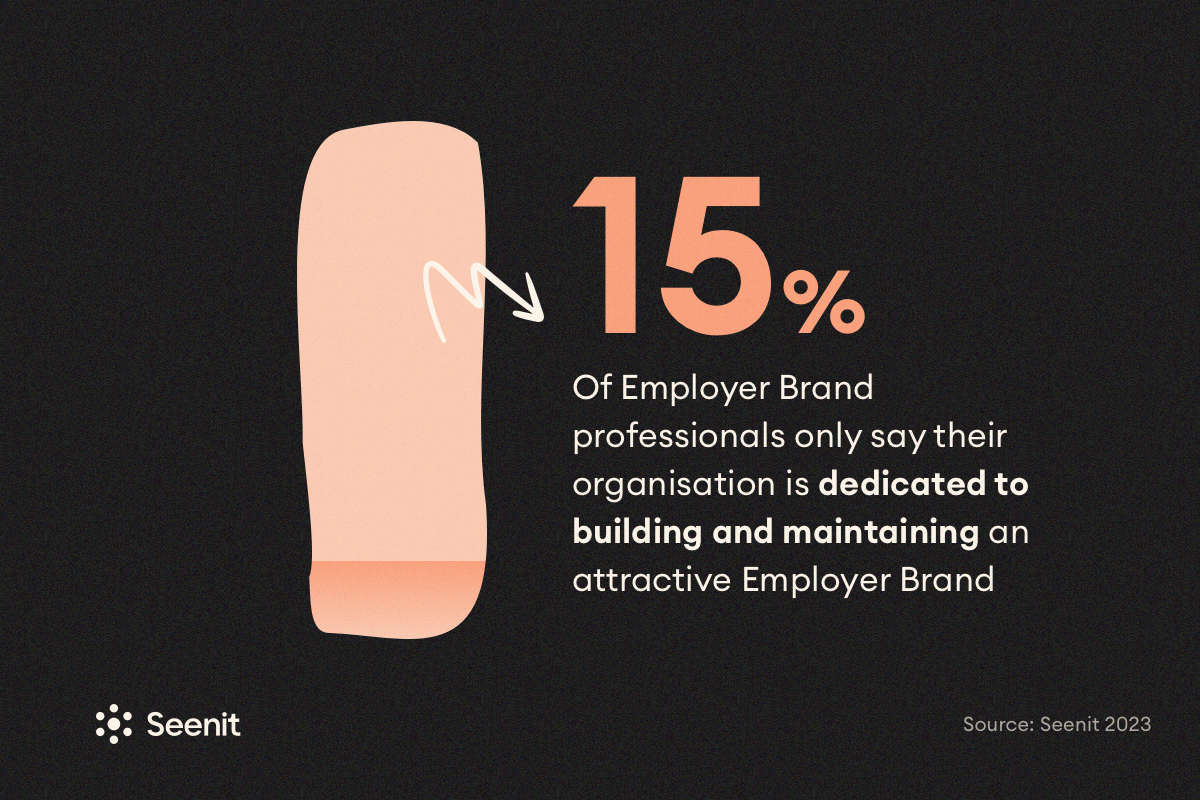
“Employer Brand is a real strategic business function; it can help attract and retain people and also incentivise clients and investors to work with your organisation.”
Shona Wilson, Global Employer Brand Director, Veeam Software
As ⅓ of Employer Branding professionals still lack leadership support, getting buy-in is key to unlock the resources necessary to elevate Employer Branding.
Kill the Employer Brand mystery. The more people who know and understand what purpose Employer Brand serves, the more you’ll be able to achieve. Consider using employee video to get your point across. You can be the first employee featured. This can help make yourself, as an employee, visible to the wider business.
It’s safe to say there are many questions to be answered. So shout about your wins, share learnings with other teams and use data to back your strategy.
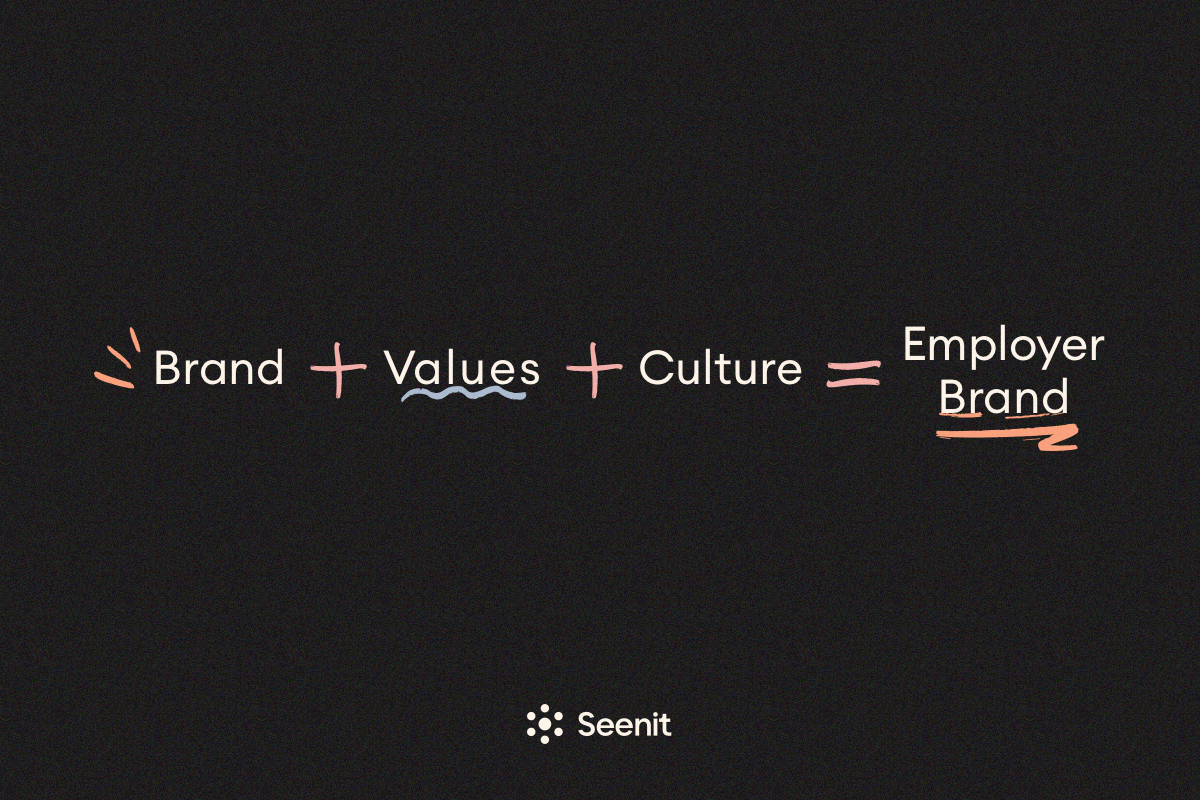
The power of the authentic EVP
Before we go into the importance of an authentic Employee Value Proposition (EVP), let’s remember what it means.
“In my experience, the word EVP is overused, everything’s an EVP.”
Shana Andrews, Senior Marketing & Employer Branding Consultant
Your EVP is the sum of all employee benefits in exchange for their performance in their role. It is how a company markets itself to attract and retain talent. It’s what makes you uniquely attractive. Or as Alex Her puts it “What are you offering your people to stay and future people to join you? It’s your biggest selling point and it’s like a war cry or battle cry, whatever the case may be, that you and I as ambassadors of the company as well as recruiters, can use that to get people to join us.“
An EVP should ring true to your business, with 62% of Employer Branding professionals saying their organisation’s Employer Brand aligns with the actual work culture and values. However, 75% say their EVP does not reflect the actual employee experience. Clearly, it’s not enough to have an EVP. It needs to resonate with your audience.
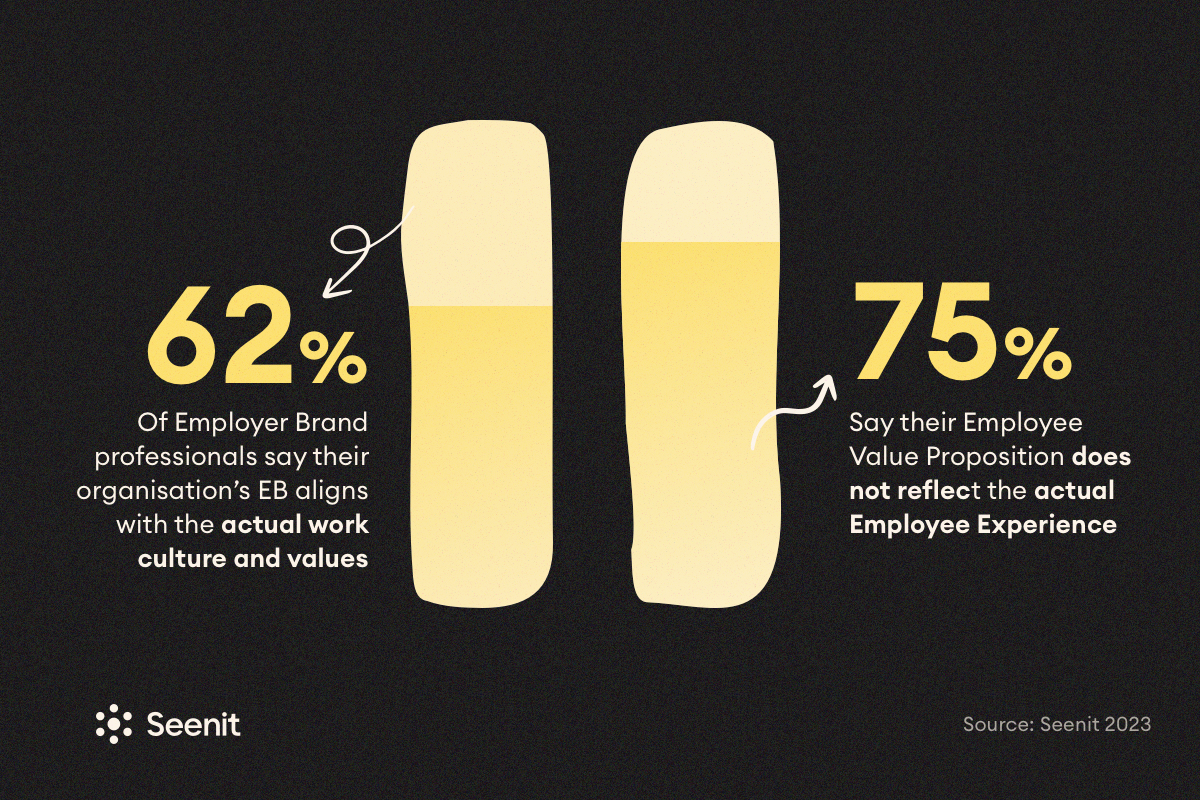
“I’m working towards building a more emotive-led EVP. Leaning into, rather than features and benefits, how does it make people feel?”
Shona Wilson, Global Employer Brand Director, Veeam Software
So, what makes your EVP emotive? Authenticity.
Reflecting the reality of your business is key. And who knows what that is, better than your employees? There’s a reason 72% of Employer Brand teams use real employees to promote their Employer Brand.
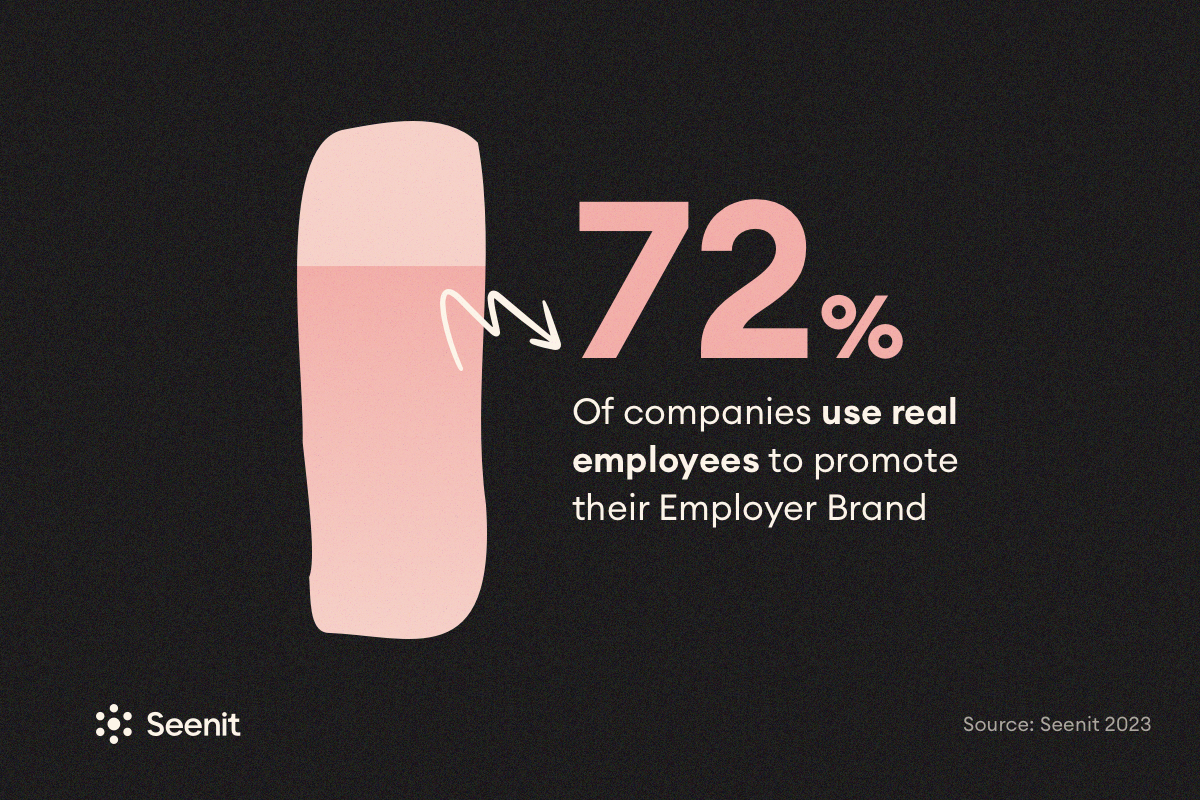
“Making sure that your employees are able to speak is critical. We want to make sure that we have that, that we can emphasise their voice if they’d like us to.”
Mary Streetzel, Head of Global Employer Brand, Google
This is where channelling the employee voice will be a game-changer in both internal and external communications.
“Honestly, we’ve talked a lot about putting our employees out there, giving them the microphone.”
Lisa MacNeill, Global Head of Employer Brand, L’Oréal
Webinar: How L’Oréal is redefining its Employer Brand to stay ahead
It’s clear that elevating the employee-voice is an asset to your EVP and video looks to be the number one format to do so. Leveraging authentic employee-generated video will empower employees to have their voices heard and benefit your Employer Brand. It’s a win-win.
“We have found people resonating with a lot of video content because obviously it’s great to have. In my experience, I’ve seen that people resonate with people stories because that’s stories that have been bringing people together in the world since the start of time.”
Adam Horvath, Chief Sparkle Offizzer, Brandfizz Employer Branding
Customising your EVP
We touched on Employer Branding no longer being one size fits all, and the same is true of your EVP.
“Creating or evolving an EVP is not an easy task. Everyone likes to say: ‘Okay, EVP. Let’s get that done in 90 days, we’re in and out of this process and everyone’s gonna love that.’ That is not the way that it works.”
Alex Her, Head of Global Employer Brand, GoDaddy
When we talk about EVP, it’s important to understand where it fits in with your Employer Brand strategy. Think of your EVP as the heart of all your Employer Branding efforts, and your Employer Brand the outer layer that relies on the heart to stay alive. Or as Shana puts it “You’ve got the EVP that’s the nucleus, and then the employer brand is kind of the creative expression of that nucleus.”
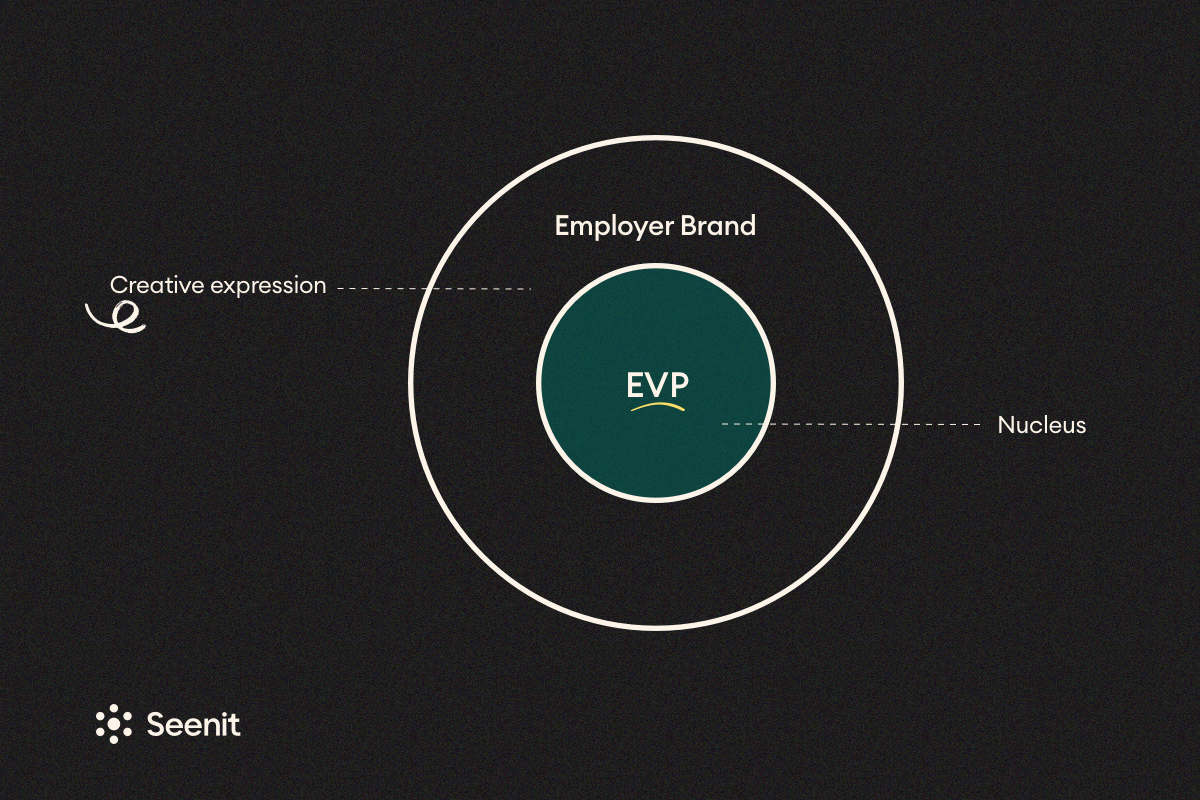
From this perspective, it’s not so much your EVP changes, but more the way in which you communicate it. This is especially important to keep in mind when dealing with large organisations that need to adapt the EVP to different markets, cultures, languages. This unearths one critical challenge of an EVP: you can’t copy-paste or rely on Chat GPT.
“EVPs are going to be difficult now. You used to build an EVP, and it would last for years; that’s no longer the case.”
Shona Wilson, Global Employer Brand Director, Veeam Software
So what do you do?
“As a global leader, your responsibility entails establishing strategic objectives and constructing a comprehensive EVP framework. To discover localised solutions and empower your regional teams to breathe life into these initiatives. ”
Adam Horvath, Chief Sparkle Offizzer, Brandfizz Employer Branding
Here are 3 key components to keep in mind when building your EVP framework.
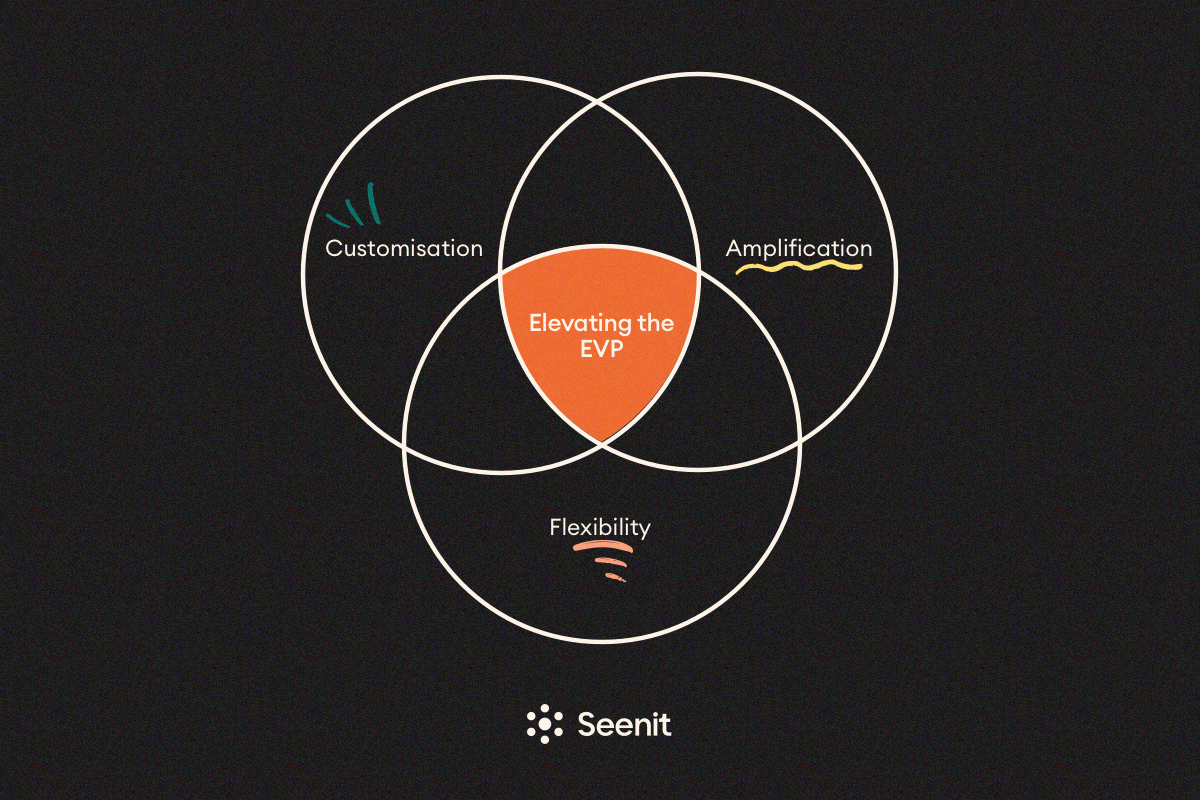
1. Customisation
“We basically defined a couple of what we called our critical talent cohorts.” Shana Andrews recommends dividing your employees into different groups, or cohorts as she calls them, and identifying what they care about, their challenges and ultimately, what you need to communicate to them. Types of cohorts will change based on what is relevant for your business, such as tech talent, working mums or a specific country.
“You’re not going to create a new EVP, but how do you customise how you talk to these different talent groups?”
Shana Andrews, Senior Marketing & Employer Branding Consultant
Once you’ve got your cohorts, you can identify what part of your EVP most resonates with them, and go from there.
2. Amplification
Once you know what area to focus on, you can amplify certain aspects of your EVP. For example, one cohort might care about flexible work most, while another might rely on your maternity benefits. Both these topics are part of your EVP, but you can choose to focus on a certain one in your next campaign.
“Amplify what you’re doing and dial that up, it’s not necessarily a change. But it’s more about getting that EVP locally resonant in each of your markets, in each of our functions. So of course, you have this global EVP, but it’s also about getting it to that local functional storytelling point.”
Lisa MacNeill, Global Head of Employer Brand, L’Oréal
3. Flexibility
“Flexibility is important if you align and then localise content. You’ll see we feature every region whatsoever. There’s something for every single one of our stakeholders in recruiting and then we localise the content”
Mary Streetzel, Head of Global Employer Brand, Google
Flexibility means adapting to changing priorities or circumstances, and letting your cohort guide you along the way. Remember, you’re not changing the fundamental values of your organisation. You are, however, making sure every employee is represented and feels involved in the process. This is when employee-generated content can come into play, to highlight your employees and their priorities truly.
“We share the global EVP idea across different geographies. Each country then has their own freedom and uniqueness in defining how that EVP comes to life in their local market”
Abhirupa Biswas, Country Talent Sourcing & Employer Branding Manager UK & Ireland, IKEA
Webinar: Employee Storytelling with IKEA UK&IE
Through a process IKEA calls demographic design, they can allow each cohort to have a say in the EVP without straying from the main message.
3. Future-proofing Employer Branding
We covered the recent shift in Employer Branding and aspects to keep in mind for a stronger strategy. Now, let’s consider the next steps for professionals and the function’s future.
Competitive branding
It’s easy to focus internally when working on an Employer Brand. You wonder what candidates care about, what attracts top talent, and what keeps employees engaged. And these are all crucial puzzle pieces in Employer Branding. However, to remain competitive, you ought to look out for competition.
“It’s getting more and more challenging to differentiate yourself in the market. How do you build an EVP that makes you stand out from your talent competitors? I think that’s one of the hardest things to do right now.”
Shona Wilson, Global Employer Brand Director, Veeam Software
Competitive branding has been an increasing concern for professionals this year. The threat of other organisations touches all aspects of Employer Branding, from attraction and engagement to retention and advocacy.
“The competition for certain target talent is fierce. Candidates have become very advanced in terms of recognising quality content and being picky about what channels they use and what videos/visual materials they like to watch and engage with.”
Maria Berezovskaya, Head of Global Employer Branding, Wargaming
In one way or another, the market will dictate what you need to care about. Market leaders could easily become irrelevant if they don’t offer what candidates are looking for.
Stay true to your values, but remember, employees and candidates alike are keeping their ear to the ground, especially as younger generations enter the workforce.
The role of AI and technology
We couldn’t write a report in 2023 without touching on AI and technology. Interestingly, only 20% of Employer Branding professionals say they use AI in their role, and a further 15% say they are planning on it.
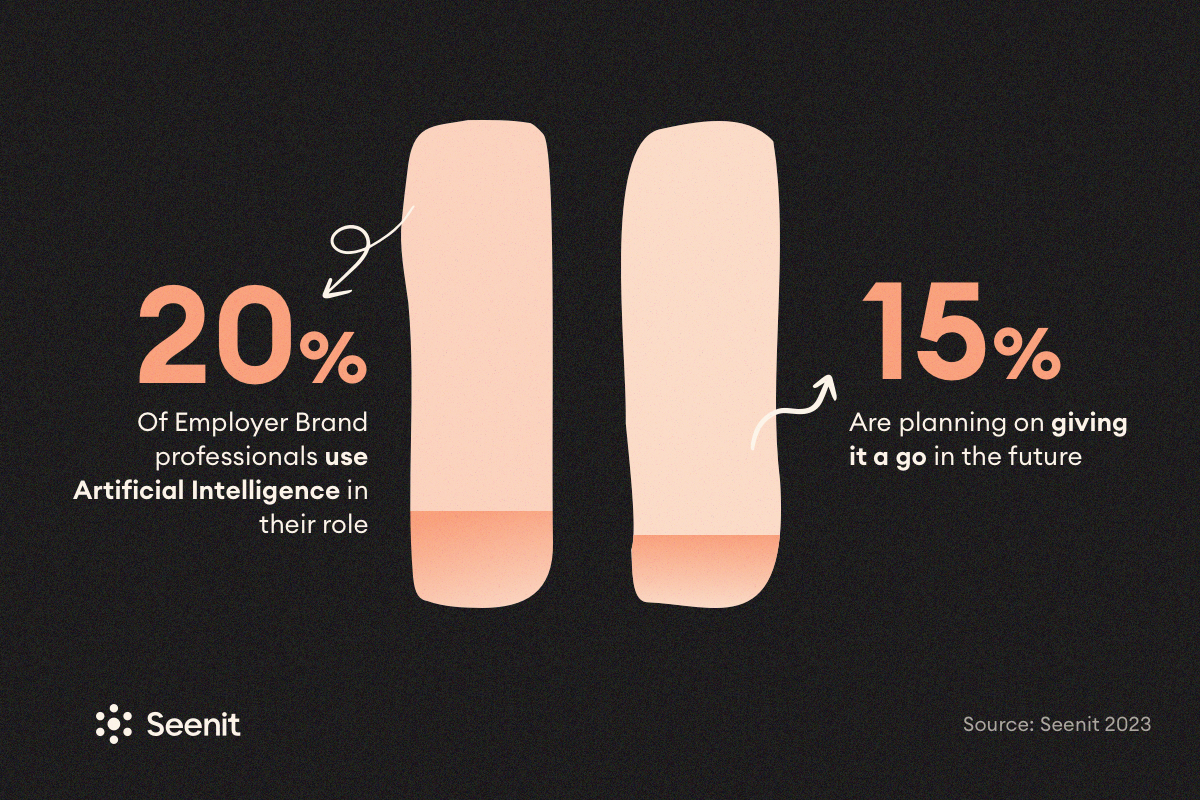
So, as AI is the latest shiny toy worldwide, what does it mean for Employer Branding? First, let’s demystify the topic.
What is AI?
AI, or Artificial Intelligence, is the ability machines have to perform tasks once they have been programmed to do so.
And though it has blown up globally with the introduction of tools such as Chat GPT, it’s in no way a new technology.
Whilst popular AI tools can save time and enhance Employer Branding, professionals can feel pressure to use these tools. So ask yourself, what need can AI solve? And remember, AI isn’t the only solution.
“The most significant change I’ve seen in technology is that Employer Brand technology is out there.”
Shona Wilson, Global Employer Brand Director, Veeam Software
If you’re a one-person band, or part of a small team, using AI and technology can amplify the work you do, and support you to get your work done. Keep in mind, as technology progresses, employees value the human touch. Yes, AI-generated content can come in handy, but nothing will replace authentic communication. People trust people.
Remember, employee-shared content gets 8 times more engagement than content shared by brands. Some messages are simply better conveyed from person to person, so consider how impactful employee storytelling can be compared to AI messages.
So use AI and wider technology to your advantage, but don’t forget, humans aren’t going anywhere.
Measuring the ROI of Employer Branding
A key part of looking forward is looking back. To know how to stay on top of your Employer Brand, and make it work harder for your business, you need proof that it drives results. And the key to that is: leveraging data. Easier said than done.
“Obviously tracking is still a huge thing that has been a roadblock for a lot of employer branding teams, it’s the lack of ability to actually track the full candidate journey.”
Alex Her, Head of Global Employer Brand, GoDaddy
So, let’s say you don’t have the data. Don’t worry, you’re not alone, but you can manage it. Don’t hesitate to build on what you have with external sources, especially when pitching to a board or leadership team.
“I use data as much as possible and combine company data such as retention, engagement, and hiring metrics with marketing analytics.”
Shona Wilson, Global Employer Brand Director, Veeam Software
Regarding what data to track, here are some KPIs to look out for:
Attraction
- Time-to-hire
- Career page clicks
- Job offers
Retention
- Employee referrals
- Turnover rate
- Promotion rate
Engagement
- Employee experience score
- Employee satisfaction score
- Employer reviews
However, numbers don’t always paint the full picture. Qualitative data can have as much of an impact as quantitative. But don’t pretend to know what your audience wants.
“It can be incredibly valuable to validate your quantitative data with focus groups. You can’t just write messaging in a vacuum.”
Shana Andrews, Senior Marketing & Employer Branding Consultant
Go out and speak to your colleagues. Don’t hide behind data or assumptions, you’ll be surprised what you can uncover by simply offering up a listening ear.
Conclusion
It’s clear Employer Branding is no longer just an HR, marketing, or communications function - it is a business function. And as we navigate the ever-changing landscape of the corporate world, this function has never been more vital for organisations seeking to attract, engage, and retain top talent.
The recent shift from Employee Engagement to Employee Experience highlights that, moving forward, it’s all about the people – employees and candidates alike.
An authentic Employee Value Proposition, an educated leadership team and clear KPIs, can make all the difference in the fight to keep and hire top talent.
In the pursuit of a future-proofed Employer Brand, consider employee-generated video as a powerful addition to your toolkit. It encapsulates the authentic employee voice, bridging the gap between Employee Experience and Employee Engagement. In an age where authenticity and connection are paramount, leveraging the employee voice through video is not just a trend but a strategic imperative. By embracing it, organisations can head toward a more resilient and impactful Employer Brand, ready to thrive in the years ahead.
Remember, stay agile and let the employee voice shine through. That’s the winning recipe for success in this ever-evolving landscape.
Curious to hear more about how to leverage employee-generated video? Get in touch with a member of the Seenit team, or head to our website today.
About Seenit
Use real employees to create content that cuts through the noise. By using Seenit, you build your employer brand around your people, and give colleagues and candidates alike an idea of what it’s actually like to work at your company.
Leading comms teams at companies like Amazon, H&M, Trustpilot & Vodafone use Seenit to create videos that increase engagement across their channels by up to 4x. With Seenit’s employee-generated video platform, you can collect, edit, and share videos, all in one place. Attract, engage, and retain top talent through employee video.
Search seenit.io for more.

